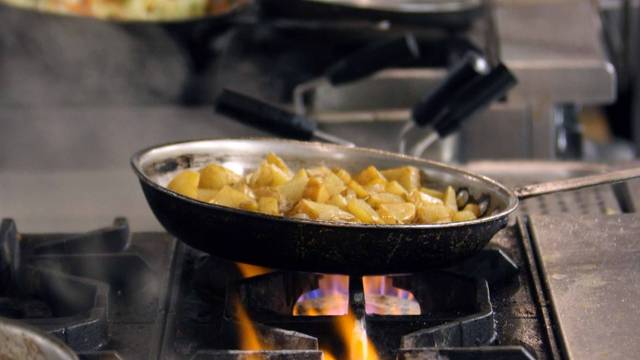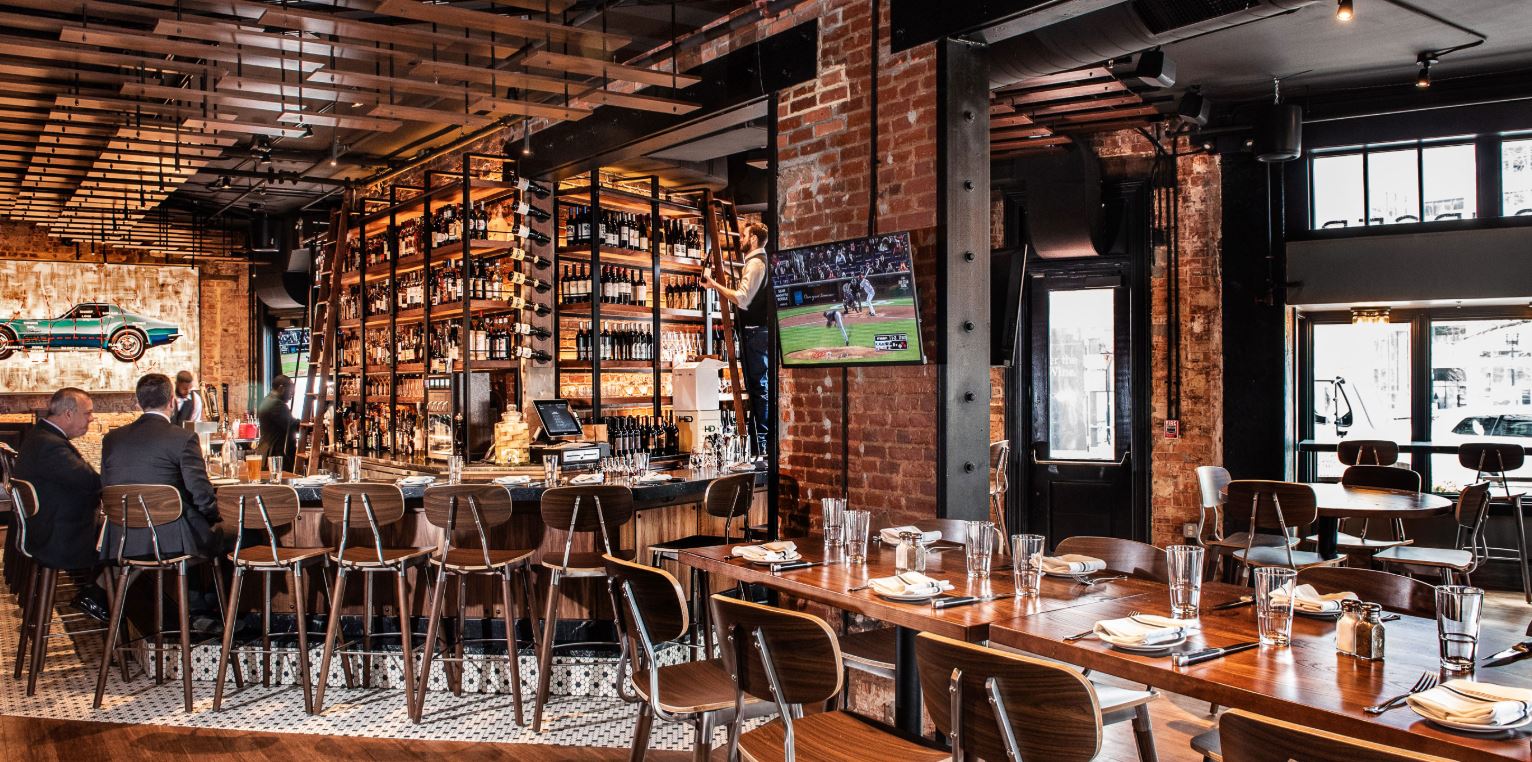Asian Restaurant ISB: A Must-Try Spot for Food Lovers in Islamabad
Asian Restaurant ISB: A Must-Try Spot for Food Lovers in Islamabad
Blog Article
Savor Genuine Oriental Food With a Pan-Asian Twist for a Cooking Experience
Starting a cooking trip with authentic Eastern cuisine, boosted with a Pan-Asian spin, offers an one-of-a-kind possibility to discover the abundant tapestry of tastes that define the area's varied culinary customs. This experience invites you to savor the beautiful balance of preferences-- wonderful, salty, spicy, and sour-- harmonized by aromatic herbs and flavors. Visualize the innovative blend of Thai curry and ramen or the unforeseen joy of sushi burritos. As you ponder these attracting recipes, think about the social narratives and historical impacts that form them, each bite using a story waiting to be found.

Discovering Pan-Asian Flavors
In the world of worldwide gastronomy, Pan-Asian cuisine attracts attention for its impressive variety and the unified interplay of tastes from numerous Asian cultures. This culinary strategy commemorates the rich customs and special ingredients discovered across the continent, creating a tapestry of preferences that is both fascinating and enjoyable. Key to Pan-Asian cuisine is its ability to balance different tastes-- pleasant, salty, spicy, and sour-- while highlighting the freshness and top quality of each ingredient.
From the umami-rich soy sauce of Japan to the intense chili peppers of Thailand, Pan-Asian food uses a considerable combination of tastes. These aspects are usually incorporated in inventive ways, boosting meals with layers of intricacy. For circumstances, making use of aromatic natural herbs such as lemongrass and cilantro, typical in Vietnamese and Thai food, adds a rejuvenating illumination to recipes, while the consolidation of coconut milk provides a creamy, abundant structure.
The focus on fresh fruit and vegetables and aromatic flavors ensures that each dish is not just a banquet for the preference buds but also for the senses. Pan-Asian food invites restaurants to begin on a cooking journey, checking out the huge and differed landscapes of Oriental gastronomy with every bite.
Combination Recipes to Attempt
While Pan-Asian cuisine is celebrated for its traditional tastes, the modern-day cooking landscape is increasingly welcoming fusion recipes that blend these timeless elements with influences from other regions. This ingenious technique not only honors the abundant heritage of Eastern cooking arts yet also presents unique preference experiences that appeal to contemporary tastes buds.
A prime example of such a fusion dish is the Korean-Mexican taco, where marinated bulgogi beef is covered in a warm tortilla, topped with kimchi and a zesty gochujang-infused salsa. This mix marries the strong, full-flavored flavors of Korea with the vivid, fresh aspects of Mexican cuisine. In a similar way, sushi burritos have actually obtained popularity, amalgamating the fragile virtuosity of Japanese sushi with the passionate, hand-held benefit of a burrito, commonly featuring combination components like tempura shrimp and avocado with a drizzle of wasabi mayo.
One more noteworthy dish is Thai curry ramen, which infuses the creamy, fragrant spices of Thai curry right into the soothing broth of standard Japanese ramen, developing a harmonious blend that entices the senses. These blend dishes extend past plain novelty; they stand for a culinary discussion in between cultures, urging expedition and advancement worldwide of Pan-Asian cuisine.
Crucial Components and Seasonings
To really appreciate Pan-Asian food, one should understand the necessary components and flavors that create its structure. This diverse culinary design attracts from a rich tapestry of Oriental traditions, employing an unified mix of textures and tastes. Secret active ingredients include soy sauce, fish sauce, and oyster sauce, which give a tasty umami depth necessary to Eastern meals. Complementary to these are rice vinegar and mirin, offering a fragile level of acidity and sweetness.
Fragrant components are critical, with garlic, ginger, and lemongrass being ubiquitous throughout numerous Pan-Asian dishes. These ingredients offer a fragrant base that boosts the complexity of tastes. Seasonings such as star anise, cardamom, and cinnamon present heat and personality, resembling influences from areas like China and India.

Cooking Methods and Tips
Mastering the art of Pan-Asian cuisine requires experience with its distinctive food preparation methods, each adding to the vivid tapestry of tastes this cooking tradition is celebrated for. Central to these techniques is the stir-fry, a rapid food preparation method that protects the dietary honesty and brilliant shades of components. Using a frying pan, the stir-fry method permits for even heat distribution, crucial for accomplishing the particular texture and flavor balance of Pan-Asian meals.
An additional fundamental technique is steaming, especially widespread in Chinese cuisine. This gentle technique preserves the natural tastes and nutrients of active ingredients, making it ideal for seafood next page and vegetables. Dumplings, a cherished staple, usually benefit from steaming, resulting in soft, succulent textures.
Barbecuing, likewise important, gives smoky midsts to dishes such as Oriental bulgogi or Japanese yakitori (Fine dining experience Islamabad). This strategy usually includes seasoning active ingredients, enabling tastes to penetrate deeply prior to food preparation over an open flame or hot plate
Lastly, mastering the art of balancing tastes-- wonderful, sour, salty, bitter, and umami-- is essential. Correctly layering these elements can boost a meal from common to amazing, providing a complex and pleasing culinary experience that embodies the significance of Pan-Asian cuisine.
Eating Experiences Worldwide
Across the world, Pan-Asian food provides an unequaled dining experience, commemorated for its abundant tapestry of flavors and vivid discussions. This culinary sensation has actually gone beyond social boundaries, recording the hearts and tastes of food fanatics worldwide. In multicultural cities fresh York, London, and Sydney, Pan-Asian dining establishments act as melting pots where culinary traditions from Thailand, Japan, China, and past assemble, giving restaurants with a diverse mix of meals that highlight the area's diversity.
The you can find out more global allure of Pan-Asian food lies in its capability to provide both authenticity and technology. Cooks skillfully wed conventional ingredients such as lemongrass, soy sauce, and miso with modern methods, causing dishes that are both acquainted and refreshingly brand-new. This combination allows restaurants to embark on a cooking journey that appreciates heritage while welcoming modernity.
Moreover, eating experiences are raised through thoughtfully created settings that reflect the ethos of Pan-Asian aesthetics. From minimalist Japanese-inspired insides to vibrant Thai-themed rooms, each restaurant provides a distinct ambiance that complements the cooking offerings. Consequently, patrons are not just taking in a dish yet partaking in a social experience, making Pan-Asian dining an absolutely worldwide sensation.
Final Thought
The expedition of Pan-Asian cuisine provides a profound understanding of the intricate interaction of flavors and cooking practices throughout Asia. By embracing combination dishes such as Thai curry ramen and sushi burritos, the cooking journey not only highlights the adaptability of traditional active ingredients however also showcases ingenious modern-day methods. This gastronomic adventure, enriched by necessary seasonings and cooking methods, provides a distinct opportunity to value the social diversity and cooking creativity that define Pan-Asian cuisine on an international scale.
Beginning on a cooking journey through genuine Eastern food, improved with a Pan-Asian twist, offers a distinct possibility to check out the rich tapestry of flavors that specify the region's diverse culinary traditions.In the realm of worldwide gastronomy, Pan-Asian food stands out for its remarkable variety and the harmonious interaction of tastes from numerous Asian cultures. Trick to Pan-Asian food is its capacity to stabilize different tastes-- pleasant, salty, spicy, and sour-- while highlighting the freshness and top quality of each ingredient.

Report this page